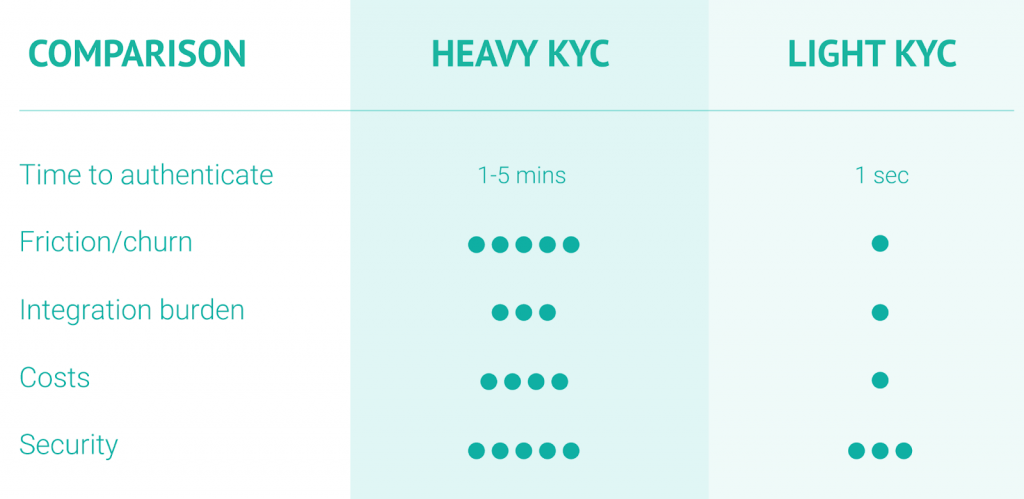What Is Age Verification Software?
Age verification software provides a way for institutions and businesses to check the age of their customers. This is often part of an onboarding or KYC (Know Your Customer) process.
Age verification software comes in various forms. It can be a component of a full identity verification tools, with APIs that allow integration with other corporate systems. It can be a dedicated tool that does only this and stacks with other software. Alternatively, there are digital products dedicated to age verification and specific solutions for offline field usage, such as mobile apps to verify IDs on entry to casinos and music festivals.
Just as the applications for age verification can vary, so can the methods of providing it. Some systems focus on verifying documents and checking databases such as those from governments and credit reference agencies. Others incorporate video calls and interactions with live agents.
What Companies Use Age Verification Software?
The need to control access to age-restricted products, services and websites means that many types of companies have to use age verification software in order to keep underage users safe and, importantly, to also keep their license.
These include:
- banks
- loan companies
- money transfer services
- fintech firms
- online casinos and betting sites
- sellers of age-restricted products (such as weapons, alcohol and tobacco)
- dating services
Increasingly, age verification is also on the agenda for social media sites. In part, this is to combat users below the required age using the sites.
However, as widely discussed in the wake of Instagram rolling out new age verification in June 2022, it’s also to comply with federal laws. These prohibit data collection on under 13s without permission from their parents.
With so many organizations requiring age verification data, the identity verification industry (of which age verification is an integral part) is anticipated to double in size between 2021 and 2026. By 2026, it’s predicted to be worth $17.6 billion.
How Does Age Verification Software Work?
Age verification software can employ a range of different techniques to check an individual’s age. Like many KYC checks, age verification tends to center around checking official documents such as passports, driving licenses and other forms of government ID.
Customers submit these documents along with their date of birth. Scanned documents and photographs are often accepted, sometimes using a digital process that requires to user to upload a selfie photo or video alongside their document(s).
The checks themselves are often automated, referring to government databases or credit files. In some cases, systems channel all or some of these verifications for manual human review.
AI-based systems that use face analysis to estimate a user’s age are also increasingly popular. Used in isolation, these are not sufficient to ensure KYC compliance. However, they are sometimes deployed in environments such as nightclubs and self-service checkouts to automate requests for further manual checks or for a form of ID.
Discover how SEON can reduce your age verification and other IDV costs by weeding out fraudsters early – with machine learning, digital footprinting and handy APIs.
Ask an Expert
What Are the Challenges of Deploying Age Verification Software?
The primary challenge of deploying age verification is cost. Each KYC check can cost from $13 to over $130, with the annual bill for financial institutions running to tens of millions every year.
Another significant concern is friction for users. As with all KYC checks, things that slow customers down in achieving their objectives risk offending or inconveniencing them.
This, in turn, can lead to abandoned applications and transactions. Research shows that 62% of consumers in Europe have abandoned application processes for financial products.
Of course, in many cases, these checks aren’t a choice but a legal necessity for the organization – so the best one can do is find efficient, compliant methods of age verification that introduce lower friction than others.
The Importance of KYC and Age Verification
KYC verification, of which age verification is a key component, is an integral part of day-to-day operations for a variety of companies. For many, especially financial institutions, gambling firms and fintechs, it’s a matter of legal compliance. It’s also key to minimizing fraud.
Age verification also helps companies selling age-restricted goods and services to operate within the law and keep minors safe. Where local mandates call for it, this can include sales that are conducted online, to either be delivered or for BOPIS, both important channels for many a retailer.
How to Deploy Better Age Verification Software
Two key priorities for deploying better age verification software are reducing costs and minimizing friction for genuine customers.
A good way to achieve both these goals is to employ pre-KYC checks, to filter out people who needn’t go through a full verification process because they are obviously fraudulent or otherwise unsuitable.

Using methods such as data enrichment, velocity checks, and device fingerprinting, businesses can access valuable information that can mean not every customer needs to pass through the most hands-on version of the process.
Consider the following scenarios:
- Data enrichment or device fingerprinting solutions may raise enough red flags to reject a customer without any further checks.
- A KYC solution that maintains records of past checks may allow a customer to pass through based on data and documents already held. Similarly, large institutions with multiple departments can often reduce their costs and improve efficiency by ensuring systems communicate with each other.
Depending on what such pre-KYC checks indicate, you might want to implement light KYC or heavy CDD or EDD checks, including age verification.
The most crucial thing is to mindfully work through the typical customer journey, alleviating unnecessary points of friction while ensuring all of the compliance boxes are ticked. This way, age verification compliance can combine with fraud prevention to keep your bottom line and your customers safe.








